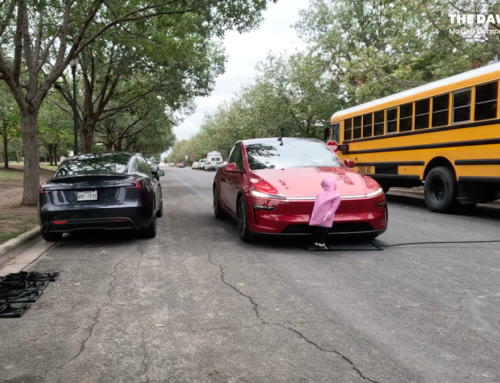Investing in energy future
June 14, 2025

BANGLADESH stands at a crossroads. On the one hand, it faces intensifying climate risks, mounting fuel import costs and increasing energy demand; on the other, it has the opportunity to shape a more sustainable and resilient energy future. The national budget for the 2025-26 financial year, recently unveiled, provides a timely lens through which to assess how seriously the country is preparing for a renewable energy transition. While there have been institutional efforts — notably the government’s move to update the Renewable Energy Policy 2008 to make it more relevant to the current context — the fiscal strategy laid out in this year’s budget does not reflect a proportionate commitment to the renewable energy agenda.
Current allocation
IN THE previous financial year (2024–25), the government had made a modest yet symbolically important allocation of Tk 100 crore (approximately $10 million) to establish a renewable energy fund. This was widely interpreted as a recognition that a transition to clean energy is not just desirable but necessary. Unfortunately, in the 2025–26 financial year budget, there is no mention of any continued or enhanced funding for this renewable energy fund, signalling a retreat rather than progress.
Instead, the broader energy and mineral resources division received a total allocation of Tk 2,178 crore — up from Tk 1,086 crore in the previous budget (which was later revised downward to Tk 1,053 crore). While the increased budgetary allocation may appear encouraging on the surface, it lacks any dedicated or earmarked fund for renewable energy development. In other words, there is no clear indication that any portion of this increased allocation is targeted towards achieving the country’s stated renewable energy goals.
This omission is glaring, particularly when viewed against the targets outlined in the Integrated Energy and Power Master Plan, which aims to generate 40 per cent of Bangladesh’s electricity from renewable sources by 2041. According to the plan, meeting this target would require a cumulative investment of approximately $37.4 billion to install 37.8GW of renewable energy capacity by 2050. The previous Tk 100 crore allocation, although symbolic, covered less than 0.03 per cent of the estimated investment requirement. The disappearance of even that symbolic commitment in the current fiscal year raises serious concerns about the country’s policy coherence and long-term strategy.
In the absence of sustained and scaled-up investments, policy reforms and clear budgetary commitment, the country risks falling behind its own renewable energy road map. Simply put, Bangladesh cannot afford to allow renewable energy to remain an afterthought in its national budgeting priorities — not when the stakes are this high.
More broadly, the energy sector budget continues to be skewed in favour of fossil fuels. A significant portion is still devoted to liquefied natural gas subsidies, diesel-based generation and capacity payments for idle fossil fuel plants. These priorities undermine the broader goal of transitioning to clean energy. At a time when global energy prices are volatile and the fiscal pressure from energy imports is growing, this approach risks deepening Bangladesh’s economic vulnerability.
Despite policy statements advocating for renewable expansion, the budget does little to shift the energy paradigm. There is no substantial provision for retiring outdated oil-based generation capacity. Neither is there a dedicated allocation to support the development of utility-scale solar or wind projects, or to build the necessary transmission infrastructure to integrate intermittent renewable sources into the national grid.
Barriers beyond budgets
BEYOND financial allocation, Bangladesh faces several structural and regulatory barriers to renewable energy development. While some incentives exist — such as tax holidays for solar equipment imports and duty reductions on key components — these have not been sufficient to spur large-scale private investment. Land acquisition remains a major obstacle, as does the lack of grid connectivity in remote or suitable locations for renewable projects.
Policy inconsistency further hampers progress. The Renewable Energy Policy of 2008 is outdated and lacks enforcement mechanisms. Tender processes are often delayed or cancelled, creating uncertainty for investors. Moreover, there is limited coordination between different government agencies, which slows down project approvals and implementation. Even when policies are in place, weak institutional capacity at both national and local levels constrains effective execution.
Bangladesh’s continued reliance on imported fossil fuels also acts as a structural impediment. In the 2023-24 financial year, the government spent billions on energy imports, which exacerbated the trade deficit and drained foreign exchange reserves. Instead of reallocating these funds to build domestic renewable capacity, the 2025–26 financial year budget continues this dependency, with more than Tk 7,000 crore proposed for subsidies on liquefied natural gas alone. This not only distorts market signals but also undercuts the competitiveness of renewables.
Green shoots
DESPITE these challenges, there are positive developments that suggest a shift, albeit gradual, is underway. The operation of a 60 MW wind power plant in Cox’s Bazar marks a significant milestone, being the country’s first major commercial wind project. Similarly, a 500 MW solar tender is currently in progress, aimed at integrating large-scale solar generation into the national grid.
Institutions like the Sustainable and Renewable Energy Development Authority and the Renewable Energy Research Centre in the University of Dhaka are contributing to the policy and research landscape. Their efforts in energy auditing, project feasibility assessments and capacity building are laying the groundwork for future growth. The newly announced Tk 100 crore renewable energy fund, while modest, indicates an institutional willingness to explore alternative financing mechanisms.
There are also encouraging signs in the private sector. Several local companies are investing in rooftop solar for industrial use, spurred by rising electricity tariffs and unreliable grid supply. Bangladesh has also seen a proliferation of solar irrigation systems in rural areas, supported by donor funding and government facilitation. These decentralised renewable energy solutions are critical for ensuring energy access in off-grid areas and reducing pressure on the national grid.
Recommendations
BANGLADESH must rethink its budgetary and policy approach to turn these green shoots into a robust forest of clean energy. Here are majore recommendations:
Scaled up targeted investment: The government should commit to allocating at least Tk 1,000 crore annually to renewable energy development. This funding should prioritise utility-scale solar and wind projects, battery storage, and smart grid technologies. Special attention should be given to scaling solar irrigation and mini-grid solutions for off-grid communities. Such targeted investments will yield both environmental and economic returns.
Financial market integration: Bangladesh must develop financial instruments to mobilise private capital. Green bonds, blended finance, and viability gap funding can reduce risks for investors. The central bank can play a role by issuing refinancing schemes for renewable projects. Local banks and non-bank financial institutions should be equipped with tools and incentives to lend to green energy ventures.
Fixing policy inconsistency: A new Renewable Energy Act is urgently needed to replace the outdated 2008 policy. This act should mandate clear targets, streamline approval processes, and ensure regulatory certainty. Transparent and timely tender processes must become the norm. Government agencies should coordinate better to ensure smooth implementation.
Redirecting fossil subsidies: The government should gradually phase out fossil fuel subsidies and reallocate these funds to clean energy development. A portion of the liquefied natural gass subsidy budget can be redirected to support renewable energy research and development, grid modernisation, and capacity building. This reallocation will not only reduce fiscal pressure but also level the playing field for renewables.
Advancing enabling infrastructure: A modern, flexible grid is essential for integrating renewable energy. Investments in transmission and distribution infrastructure must go hand-in-hand with renewable deployment. Net metering should be simplified and expanded. Technical standards for grid connection should be clearly defined to avoid project delays.
The 2025–26 budget marks a cautious step towards renewable energy development in Bangladesh. While the creation of a renewable energy fund is a move in the right direction, the overall allocation and strategic direction remain insufficient for a transformative shift. The continued emphasis on fossil fuel subsidies and lack of systemic support for renewables highlight the need for a more coherent and ambitious approach.
The transition to clean energy is not just an environmental imperative but an economic necessity. It is about reducing dependence on volatile global markets, creating green jobs, and ensuring energy security for future generations. Bangladesh has the technical capacity, entrepreneurial spirit, and policy frameworks to lead in South Asia’s green transition. What it needs now is the political will, financial commitment, and policy coherence to realise that potential.
The time for incremental change is over. The budget for the 2025–26 financial year should be seen as a foundation — but the real work lies ahead. Bangladesh must act boldly, invest wisely and lead decisively in building a resilient, inclusive and sustainable energy future.
Musharraf Tansen is a PhD Researcher and former Country Representative of the Malala Fund.
Search
RECENT PRESS RELEASES
Related Post



